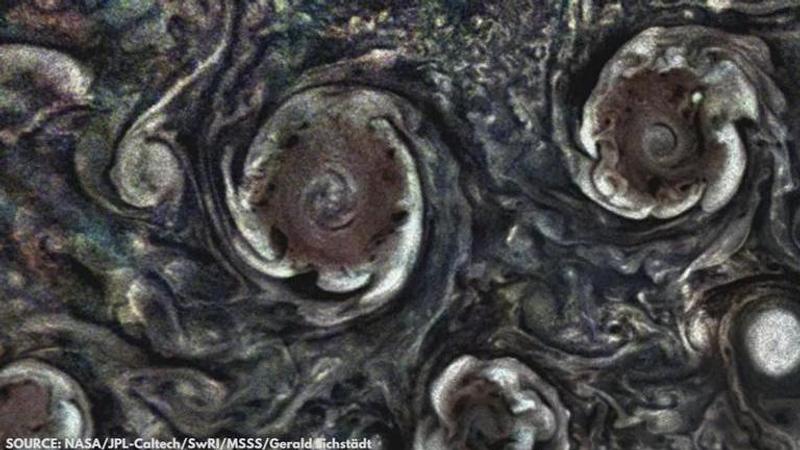Published 15:52 IST, December 23rd 2020
NASA's Juno spacecraft uncovers Jupiter 'hot spot' mystery after 25 years
A recent study conducted by NASA's Juno spacecraft has uncovered a mystery surrounding Jupiter's hot spot. Continue scrolling to learn all the details.

NASA’s solar-powered space probe Juno successfully entered Jupiter's orbit more than four years ago. The primary goal of the robotic spacecraft is to study and understand the evolution of Jupiter and its formation. Some of the recent studies on Jupiter focus on the hot spots in the planet's atmosphere.
Juno probe uncovers Jupiter 'hot spot' mystery
These hot spots on Jupiter were first discovered by NASA’s Galileo spacecraft which were sent to the gas giant in the year 1995. At the time, it was suggested that the hot spots in the planet’s atmosphere were far denser and warmer than what was predicted by the experts.
However, the new information returned by NASA's Juno space probe revealed that these hot spots in Jupiter’s atmosphere are far wider and deeper than what was expected. The research findings were revealed earlier this month on December 11 as part of a media session at the American Geophysical Union's fall conference which took place virtually.
"Giant planets have deep atmospheres without a solid or liquid base like Earth," said Scott Bolton, principal investigator of Juno at the Southwest Research Institute in San Antonio. "To better understand what is happening deep into one of these worlds, you need to look below the cloud layer. Juno, which recently completed its 29th close-up science pass of Jupiter, does just that. The spacecraft's observations are shedding light on old mysteries and posing new questions – not only about Jupiter, but about all gas giant worlds."
Also Read | 'Rare Double Planet': Jupiter And Saturn To Appear Too Close On Dec 21; Here's How To Spot
Juno entered Jupiter's polar orbit back on July 5, 2016, and it has been since revolving around the planet to gather more information about its atmosphere. The new mystery uncovered by Juno also helps researchers get a deeper understanding of the large exoplanets that go beyond our solar system.
When the Galileo spacecraft studied Jupiter’s atmosphere over 25 years ago, the probe suggested that it was unexpectedly dry, hinting that planet’s equator has 10 times less water than what was expected. However, the recent research carried out by the Juno indicated that the gas planet's atmosphere has abundant water.
Image credits: NASA/JPL-Caltech/SwRI/MSSS/Gerald Eichstädt
Updated 15:52 IST, December 23rd 2020



